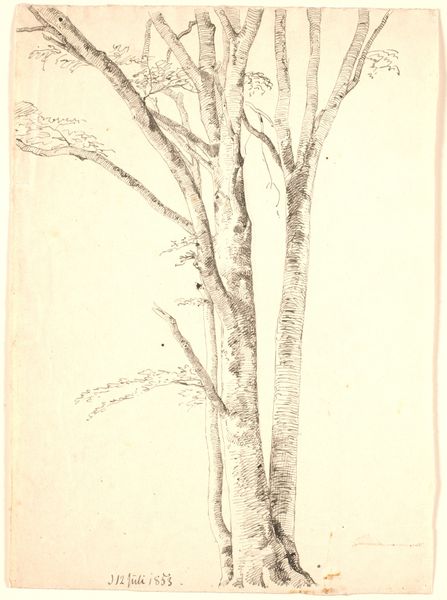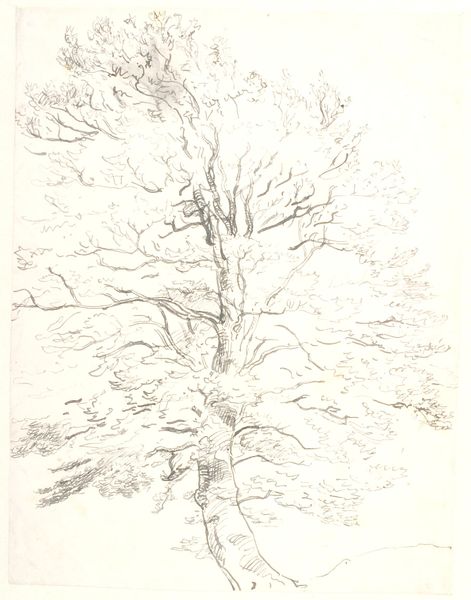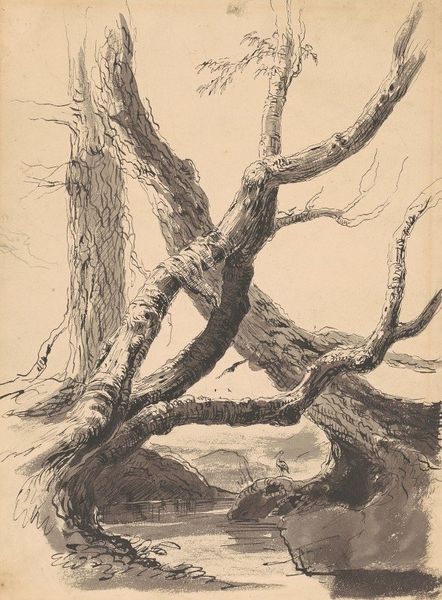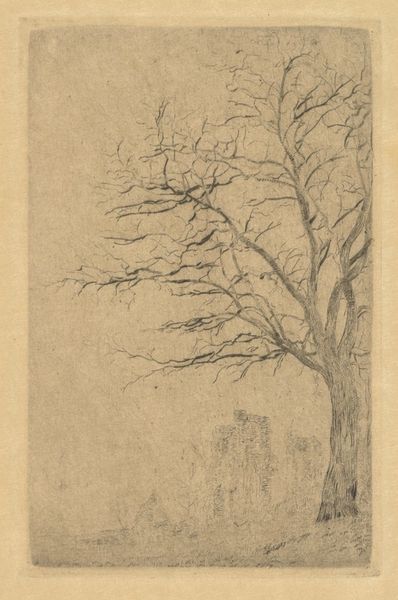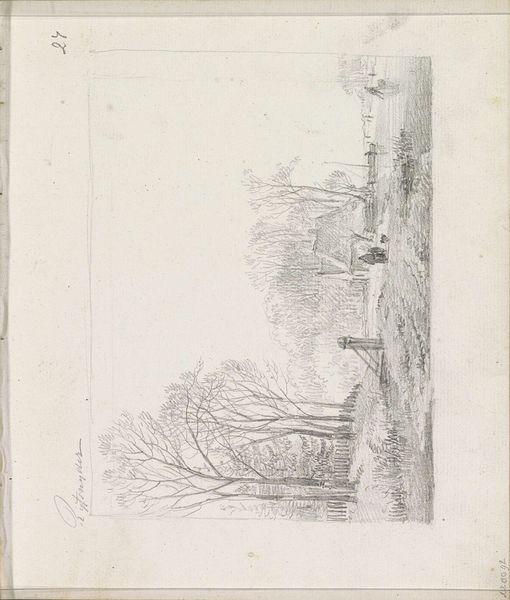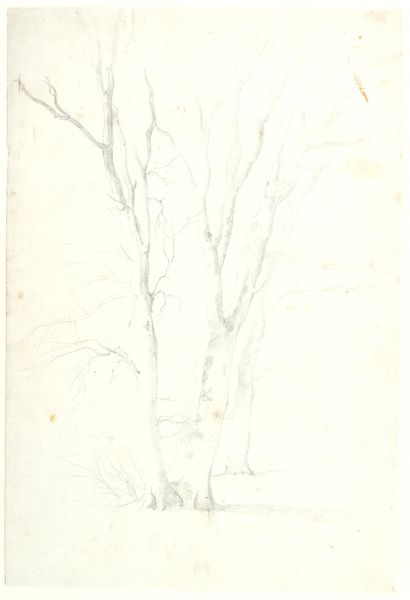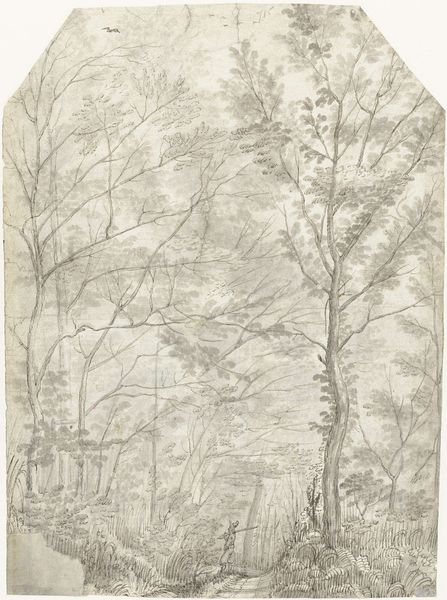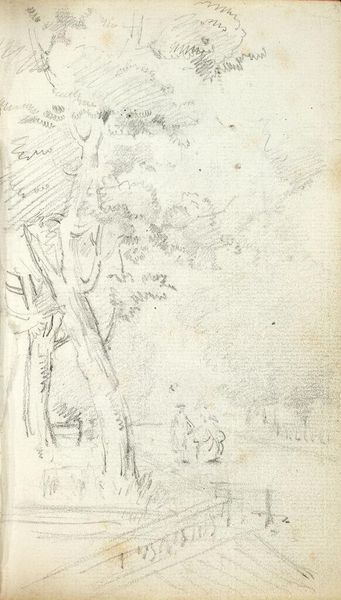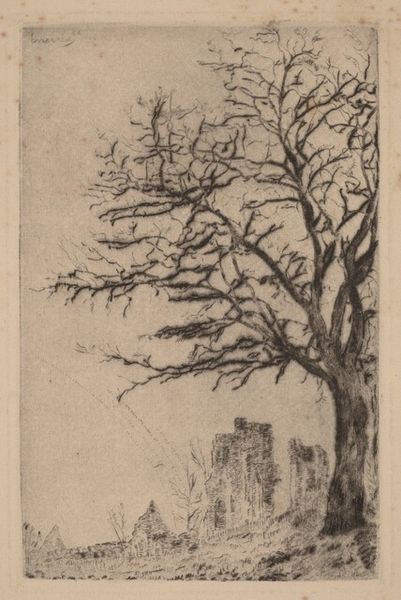
Copyright: Pyotr Konchalovsky,Fair Use
Editor: We’re looking at Pyotr Konchalovsky’s “Birch Tree,” a pencil drawing from 1926. The starkness of the black and white really draws me in. It’s quite a simple composition, but it feels powerful somehow. What’s your take on it? Curator: This drawing, seen through a historical lens, speaks volumes about the role of landscape in early Soviet art. Post-revolution, artists were tasked with representing the "new" Russia, often idealizing the worker and the land. How do you think Konchalovsky’s “Birch Tree” fits into this social expectation? Editor: I see…it doesn't seem particularly propagandistic, it's very simple and natural. Maybe that simplicity was a counterpoint? Curator: Precisely. While some artists were creating grandiose socialist-realist paintings, others like Konchalovsky focused on quieter, more intimate depictions of nature. The birch tree itself is an interesting choice. What cultural associations might a birch tree have in Russia? Editor: I think of it as very Russian, pure, and resilient. A symbol of home, maybe? Curator: Exactly. By depicting a birch tree, Konchalovsky is subtly connecting to a deep well of Russian identity and cultural memory, perhaps even resisting the complete break from the past that the Bolsheviks promoted. The very act of depicting such a familiar image in this way, a counter-narrative. Do you notice how the foreground elements are weighted down by bold expressive marks? Editor: I see what you mean! The starkness of the immediate surroundings brings into view the forest-scape. Thanks, that opens up so many more layers for me. Curator: I'm so glad you asked! Thinking about art as connected to history really brings depth.
Comments
No comments
Be the first to comment and join the conversation on the ultimate creative platform.


